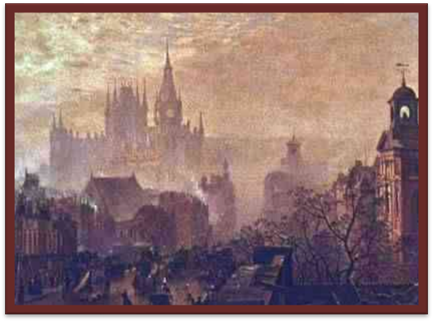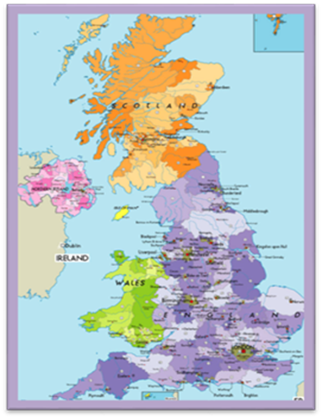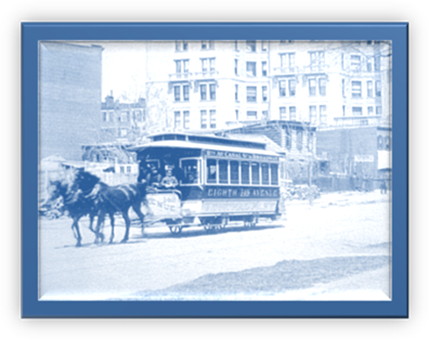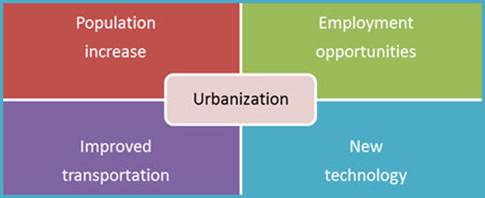LIFE IN THE BIG CITY

Industrial Image of Great Britain
Unit
Overview
The
Industrial Revolution not only changed how people lived but where they
lived. For centuries, most Europeans had
resided in rural regions, but the growing factory system brought large numbers
of people to towns and cities. Urban
areas had difficulty coping with the ever-increasing populace, and a variety of
problems arose. This proved to be
challenging for governments as well as industries and citizens. Let’s see how it all happened.
STOP: Answer Section A Questions
More
and More People
The
nineteenth century was an era of massive population growth. The amount of people living in many countries
doubled and, in some cases, tripled.
Prior to the Industrial Revolution, the nations of Western Europe had
experienced high birth rates, but death rates were high as well. However, this picture began to change. Improvements in the availability of food,
sanitation and medicine resulted in lower death rates. In other words, people were living
longer. At the same time, birth rates
continued to be stable, and the world population quickly increased. For example the population of Western Europe
numbered 266 million in 1850. By 1900,
the amount of people had expanded to 400 million.

Some
countries also experienced an influx of people inspired by the hope of finding
greater opportunities in a new place.
This practice became known as immigration. Emigration,
on the other hand, was the departure of people from a particular area. Poverty and poor living conditions frequently
motivated individuals to make this major change. For instance, a large number of Irish
citizens left their homeland for the United States and Great Britain due to
repeated crop failures; many residents of Poland emigrated for political
reasons. It soon became apparent that
the expanding population was to have both positive and negative effects.

Map of British
Cities
STOP:
Answer Section B Questions
From
the Country to the City
As a
result of the Industrial Revolution, the world’s population not only shifted in
size but location. More and more people
left the countryside for the city.
Although it gave industry the advantage of having a large labor force,
cities and towns were simply unprepared for the large wave of new
inhabitants. Use the following chart
listing several British industrial cities to see how rapidly urban areas grew.

While
wealthy factory owners built opulent homes on the outskirts, the concentration
of large clusters of people in cities, known as urbanization, soon produced a variety of problems. There was almost no advanced planning for
housing and sanitation which brought about unhealthy and overcrowded
conditions. Smoke and soot from nearby
factories powered by coal clogged the air and blackened everything. In most cases, streets were unpaved and did
not include drains. Industrial waste
polluted the waters of nearby rivers and streams; this put untainted drinking
water in short supply. Government
officials were accustomed to managing with minimal regulations and police
officers. The upsurge in population
brought about an increase in crime which made better law enforcement a
necessity. The rising population caught
everyone unprepared.
It
was not surprising that frequent epidemics occurred. Severe outbreaks of cholera developed in Asia and Europe from 1830 to 1832 and again
from 1847 to 1851. The United States
also lost large numbers to this disease in 1850. No one at the time understood the cause, but
everyone feared its consequences. Rumors
surrounding the origin of cholera became the focus of attention. In France, some believed the disease was a
government conspiracy to do away with the poorer segments of society by
poisoning them. It was relatively easy
to make this assumption since the lower class was much more susceptible to
illness. The upper and middle class had
the advantage of living in spacious houses and apartments with adequate air,
light and water. Tuberculosis was also a serious threat and became the cause most
attributed to death in Western Europe.
STOP: Answer Section C Questions
The
Bacterial Revolution
The
long-term effects of the Scientific Revolution coupled with the Enlightenment
concept that man could manipulate the universe for progress encouraged research
to improve sanitation in cities. Louis Pasteur, a French chemist, promoted
the idea that microscopic organisms called germs caused disease. Their growth could be repressed by heating a
beverage through a process which became known as pasteurization. Researchers
such as Germany’s Robert Koch
isolated certain bacteria which caused specific illnesses. This led to the development of medicines to
combat these diseases. Based on the work
of Joseph Lister, surgeons applied
the germ theory to hospitals and doctors’ offices, and the sterilization of
hands and medical equipment became common practice. The success of the bacterial revolution is
credited for saving millions of lives and is considered the greatest single
achievement in the world of medicine.
STOP: Answer Section D Questions
The
Role of Government
As
problems in urban areas continued to worsen, people began to put their faith in
the state and to look to government to resolve these issues. In 1848, Great Britain became the first
industrialized nation to create a National
Board of Health which gave
cities the authority to build sewage and sanitation systems. Sir
Edwin Chadwick, one of the nineteenth century’s most dedicated social
reformers, made public health improvement his main concern. Chadwick traveled to British industrial
cities where he documented unsafe and unhealthy living conditions. When he presented this data to Parliament,
his work resulted in the passage of the Public
Health Acts which required local authorities in Great Britain to appoint
medical examiners, to construct paved roads, and to improve housing. Towns and cities also created zoning boards
and wrote codes to establish building policies.
By 1870, cities in Europe and the United States had made real progress
in establishing efficient sewage systems and streets with adequate
drainage. The French government ordered
certain Parisian slums to be torn down and to be replaced with parks and new
structures.

A Horse-drawn Streetcar
The
Changing Environment
The
growth of industrial cities in Europe and the United States also had a major
impact on the environment as well.
Rapidly expanding industrial complexes required the removal of forest
areas and the consumption of a large amount of natural resources. The factories relied on coal as their primary
energy source. This created a dramatic
rise in carbon emissions which negatively impacted human health. Water supplies were also endangered, and
cities were forced to make plans to improve the quality of nearby rivers and
streams.

The British City of Manchester Today
However,
advancements in public transportation actually helped to improve the urban
environment. In the 1870’s, cities began
to authorize private companies to operate horse-drawn street cars. By the 1890’s, the electric version of this
vehicle offered city residents cleaner and faster mobility. Workers no longer had to live within walking
distance of the factories. Therefore,
cities were able to expand and become a little less congested. On weekends and holidays, the trolleys
carried city dwellers to the countryside, the seashore and the race
tracks. However, not all workers could
afford this form of transportation. In
many cases, the inner city became the home of those who earned the least. Neighborhoods were soon segregated by race,
nationality or ethnicity.
STOP: Answer Section E Questions
What
Does It All Mean?
The
movement toward increasing urbanization in the nineteenth century brought about
economic development and environmental change.
As population continued to increase from both natural causes and
immigration, industry also expanded the opportunities available to
workers. The new jobs, however, required
training and education. The emphasis on
providing this preparation for children delayed independence and full maturity.

As a
result, adolescence became a recognized phase of life. It also eventually encouraged lower birth
rates in industrialized countries. In
many cases, urbanization led to urban sprawl and additional environmental
concerns. What obligation does industry
have to assure clean air and clean water?
What role should government play in securing appropriate living
conditions in urban areas? These
questions continue to be as relevant today as they were in the nineteenth
century.
Additional Resources and Activities

Great Cities: Barcelona’s Unloved Planner Invents Science
of Urbanization Article with Quiz